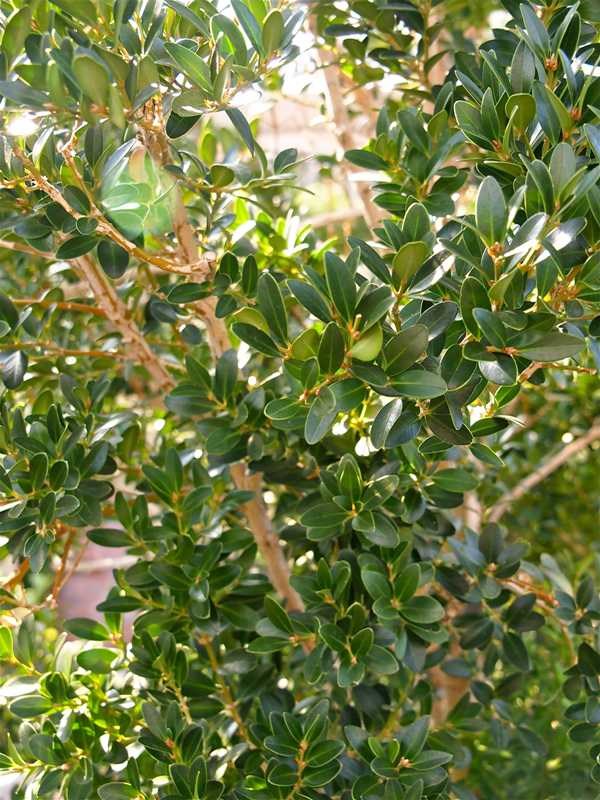Balearic Boxwood (Buxus Balearica)
Balearic Boxwood
Buxus balearica, commonly known as Balearic boxwood, Spanish boxwood or Giant boxwood, is a rounded to broad-rounded shrub which typically grows in cultivation to 6-12’ tall, but in the wild, may grow as a small tree to as much as 25’ tall. It is native to sandy soils and rocky slopes in the Mediterranean region from Spain and France to Turkey and Algeria, including of course the Balearic Islands (autonomous division of Spain) in the northeast Mediterranean (largest island being Mallorca).
Elliptic, simple, opposite, smooth-margined, glossy, evergreen leaves (each to 1 3/4” long) are dark green above and pale green beneath. Tiny, apetulous, greenish-yellow flowers bloom in April-May in axillary clusters. Fruit is a globose dehiscent capsule.
Genus name comes from the Latin name for plants in this genus.
Specific epithet is in reference to the Balearic Islands in the Mediterranean east of Spain in reference to one of its native territories.
Common name of boxwood is in reference to the prior use of the wood to make boxes. Another theory on common name is that boxwood describes the quadrangular (square box cross section) stems of young plants.

Easily grown in evenly moist, well-drained sandy loams in full sun to part shade. Plants will grow well in a variety of part shade situations, including open sun-dappled conditions or light shade with several hours of morning sun or early afternoon sun. Plants can grow in close to full shade, but typically are less vigorous and more open with decreased foliage density. When grown in full sun, plant foliage is more likely to scorch, bronze in winter or suffer from mite attacks. Plants prefer soils with a pH of slightly acidic to slightly alkaline. Plants are generally tolerant of pruning and shearing. Pruning should never be done prior to the last spring frost date. Pruning too early in spring often promotes tender new growth that may be damaged or killed by a late spring frost. Avoid cultivating around plants because they have shallow roots. Roots appreciate a good organic (e.g., bark or compost) mulch (1-2”). Thin plants and remove dead/damaged branches annually to improve air circulation. Boxwood is best sited in locations sheltered from strong winds, with, if possible, some protection from full winter sun. Foliage may bronze in winter when exposed to half day to full day sun. Winter winds can remove moisture from leaves at a rapid rate, often resulting in dehydration and bronzing.
| Hardiness zone | 8 - 10 |
| Sun light | Full Sun To Part Shade |
| Water | Medium |
| Maintenance | Medium |
Boxwood can be somewhat temperamental to grow in the St. Louis area where its evergreen foliage tends to bronze (turn unattractive brownish-yellow) in harsh winters, particularly if plants are located in open areas exposed to full sun and winter winds. Otherwise, boxwood requires little special care other than annual pruning. No serious insect or disease problems. Some susceptibility to blights and leaf spot. Root rot can also be a problem in poorly-drained soils. The three main insect pests of boxwoods are boxwood leafminer, boxwood mite and boxwood psyllid. In the deep South, nematodes are of concern. New growth is particularly susceptible to winter damage.
Shrub or small tree. Specimen/accent, hedge, mass, formal gardens, topiary. Foundations.
| Common name | Balearic Boxwood |
| Botanical name | Buxus Balearica |
| Plant type | Broadleaf Evergreen |
| Family | Buxaceae |
| Hardiness zone | 8 - 10 |
| Water | Medium |
| Maintenance | Medium |
| Flower color | Greenish-Yellow |
| Flowering period | April - May |
| Height | 6 - 12 Ft. |
| Width | 6 - 12 Ft. |